|
|
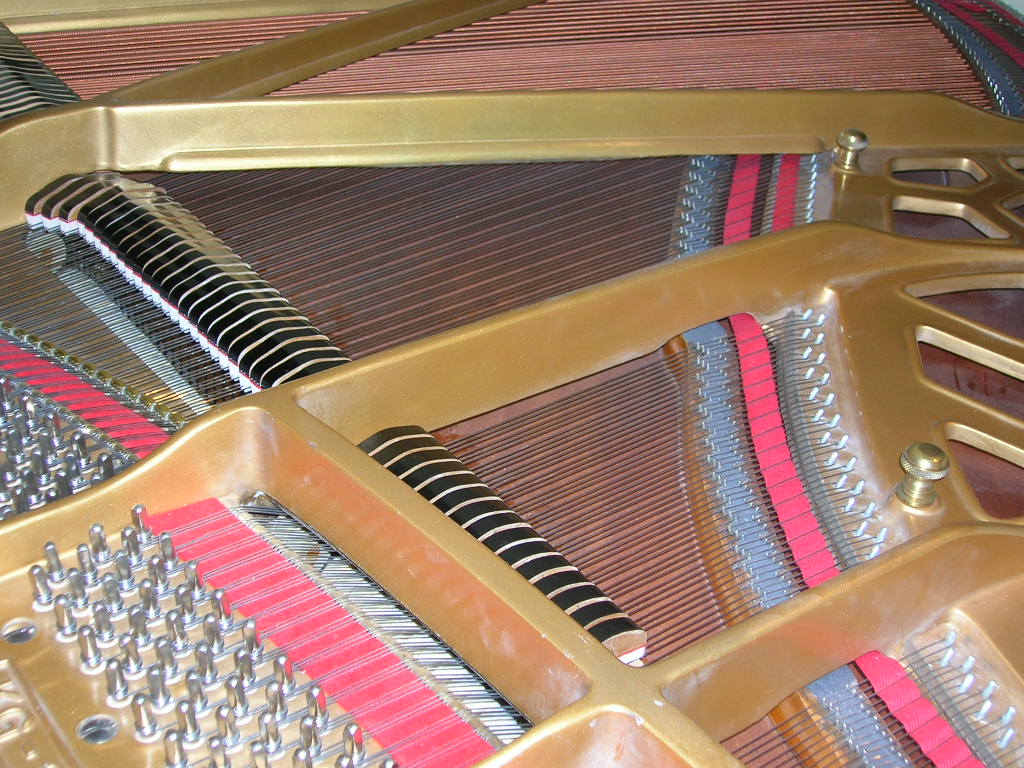
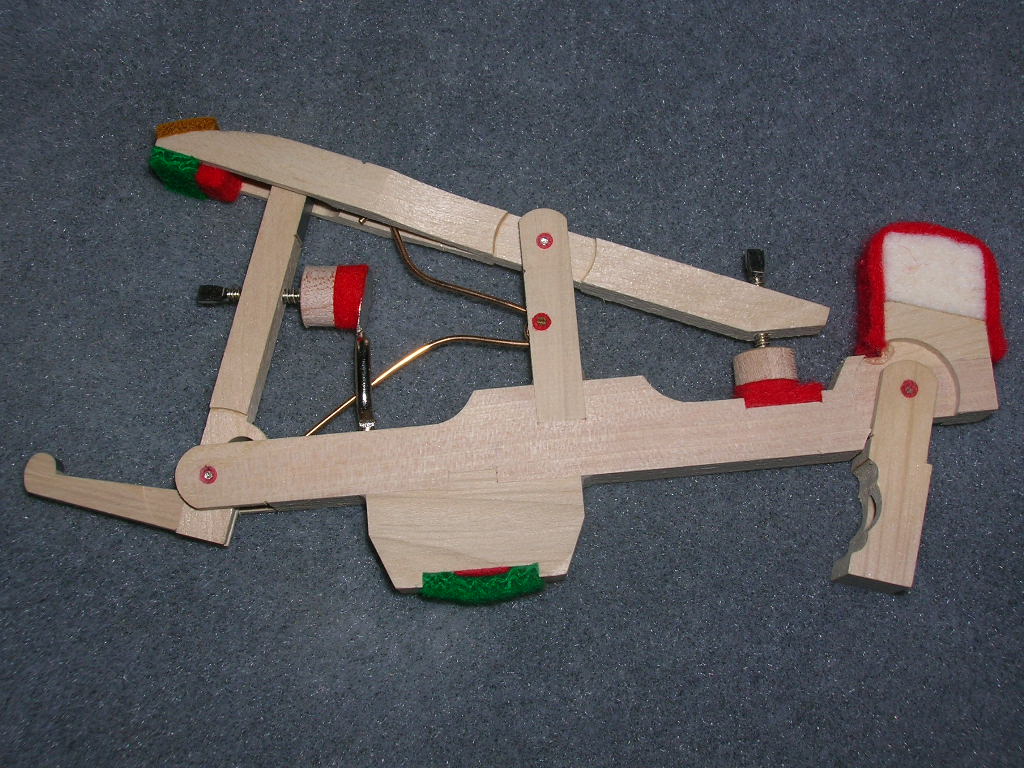

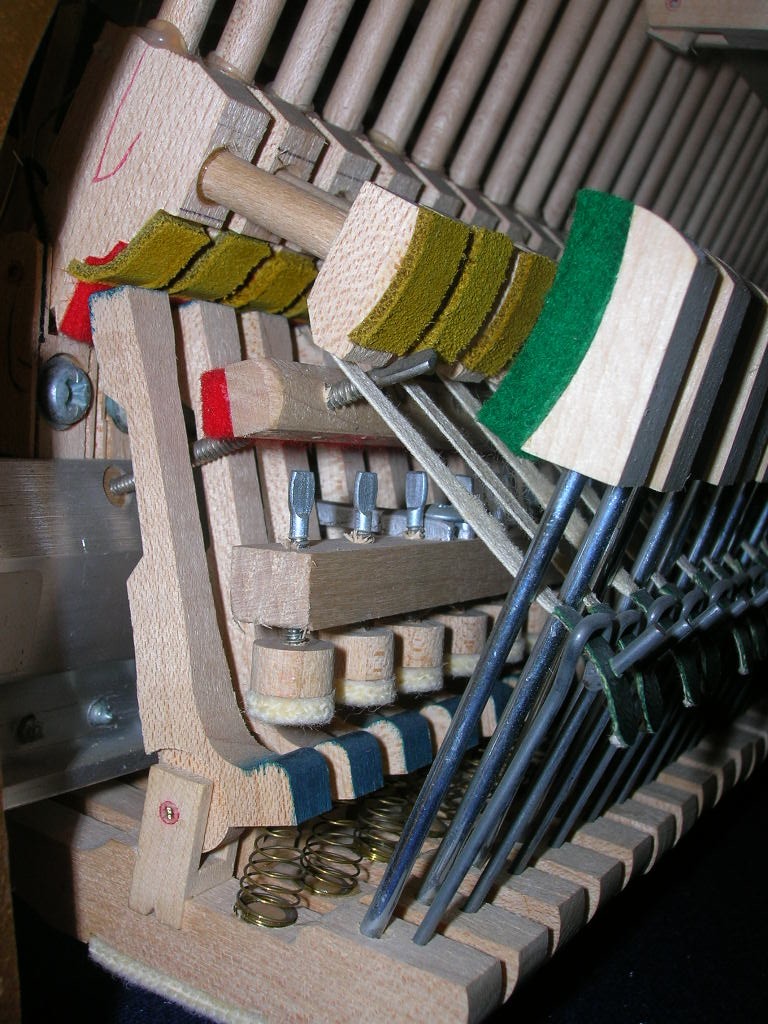
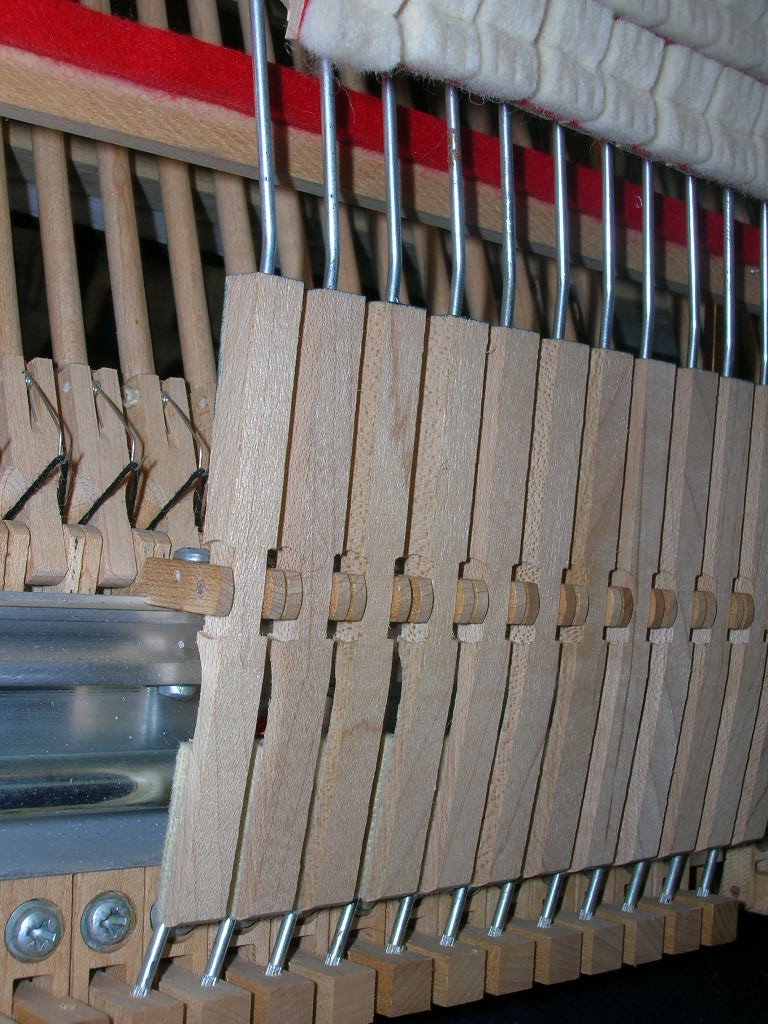

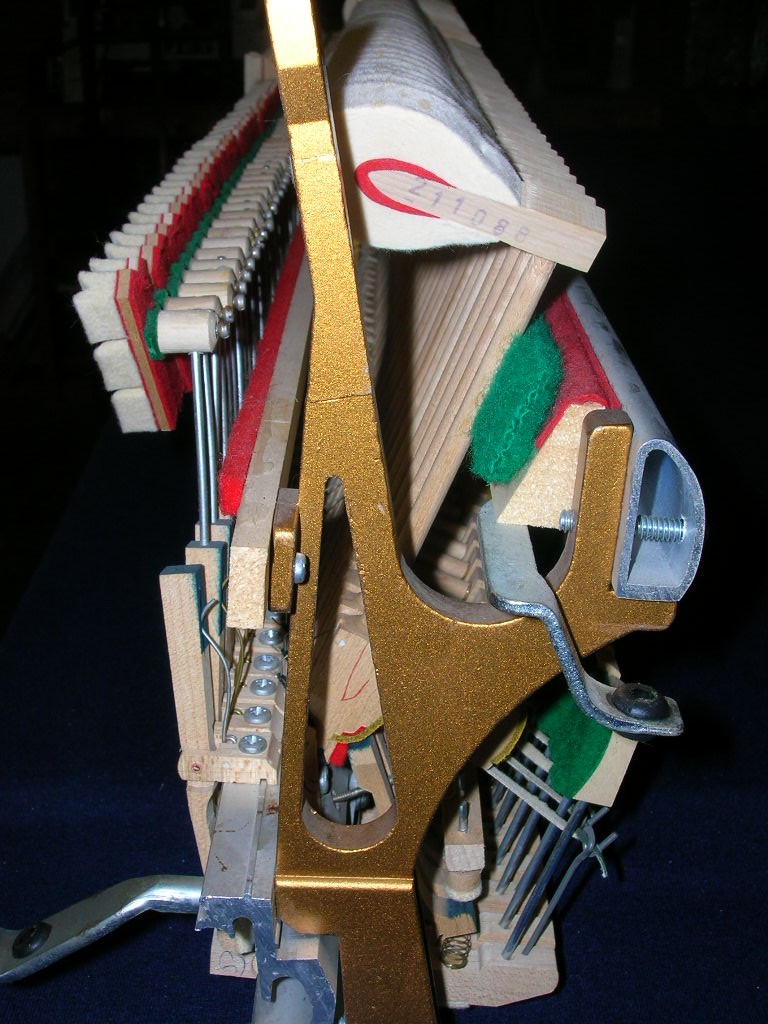
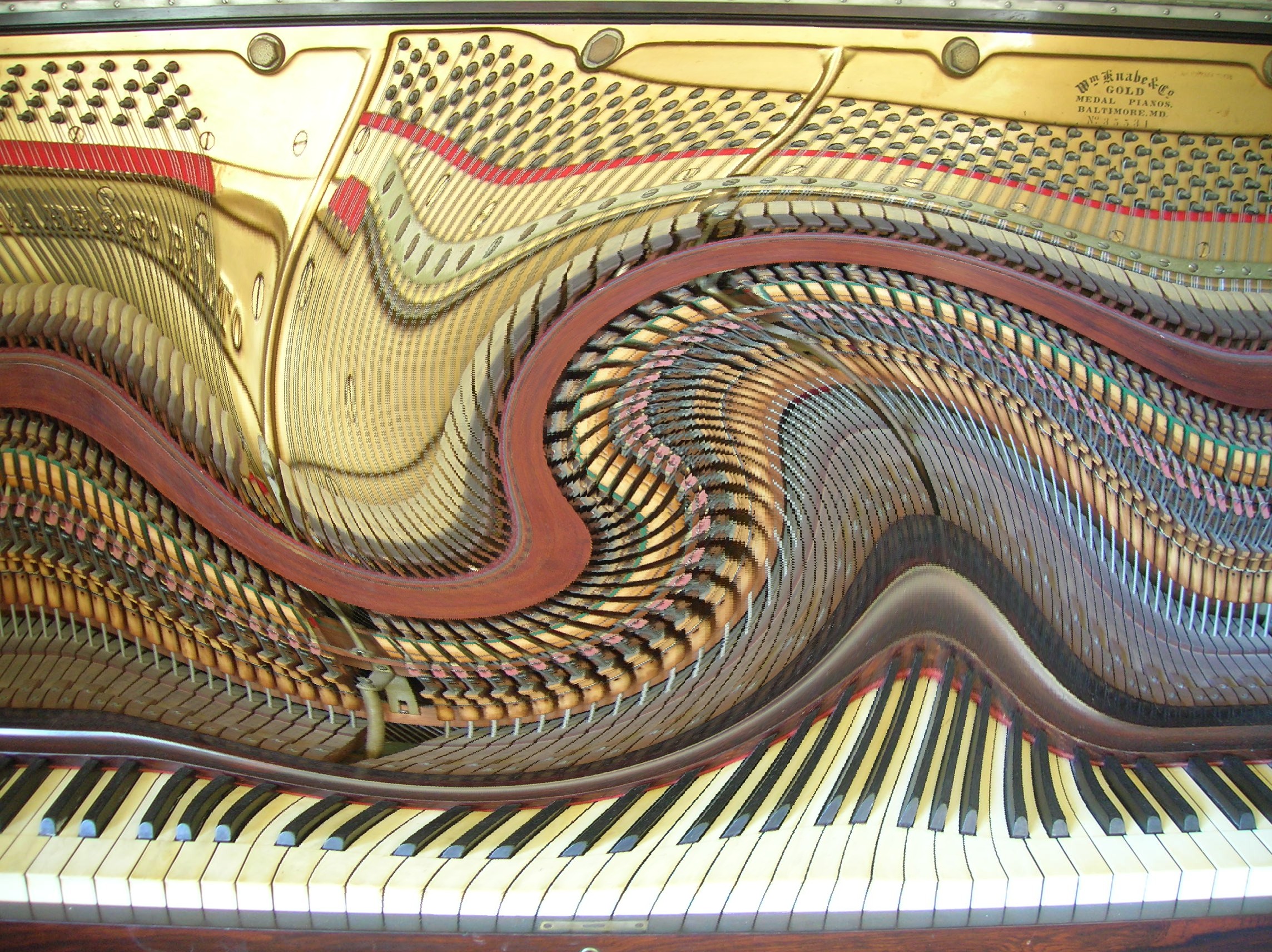

Action (vertical) |
Bridge (treble) |
Bridge (bass) |
Bridle strap - Also shows the let-off rail and buttons (below the strap) |
Dampers (grand) |
Drop action (spinet) |
Elbows- note rods that connect keys from above to elbows |
Key pins embedded in key frame with red balance rail punchings and green front rail punchings. |
Damper levers |
Dampers (upright bass) |
Hammers (upright) |
Jack |
Flange - Note brass center pin surrounded by cloth bushing |
Back action for grand damper mechanism. Note keybed at bottom and underside of pinblock at top of photo |
Cross section of grand action showing wippen (middle), hammer shank and flange (top) and the hammer and back check (far right) |
Plate (painted gold) of grand piano |
Action (grand) |
Backcheck |
Hammer shank & flange |
Wippen - Note the repetition lever at top and the jack on the left. |
Tuning pin - This pin is nickel plated. Hole near the top is where the string is attached. The blue area has very fine threads which allows the pin to be accurately turned in the pin block. |
Glossary...some terms you may hear during a service call... Action - The mechanism comprised of the keys and hammers and all the parts in between through which a pianist transmits energy to produce music in a piano. Action regulation - The process of adjusting all the moving parts of the action so that they work within required tolerances. Back action - Found in grand pianos, but not uprights, this is the damper mechanism, also called the "underlevers". Back check - Action part that determines how far the hammer rebounds off the strings. Balance rail - Part of the action frame that provides the pivot point for the keys. Bass string - Found in the lower registers of the piano, bass strings are comprised of a steel core wire and have copper wire wound around the core. Bridge - Wood rail attached to the sound board that transmits vibrations from the strings to the sound board. Bridge pin - Pin embedded in the bridge which guides the path of a string over the bridge. Bridle strap - Cloth strap that holds the wippen in place so that the action can be removed and replaced without the jack dropping out of place and getting jammed. Found only in uprights. Capstan - Screw that is mounted on the back of a key that regulates the amount of lost motion (play) in the action. Center pin - Metal pin, usually made of brass, around which moving parts pivot. Damper - Part of the action that stops the vibrations of the strings. Damper head - Comprised of the damper felt and the wood molding on which it is glued. Damper lever - Found in uprights, this lifts the damper felt off the string. Drop action - Type of action found in spinets where most of the mechanism is recessed below the keys. Also called an indirect blow action. Elbow - Part of the spinet action that, along with a long rod, connects the key to the rest of the action. Flange - Action part that connects a moving part to another, usually fixed, part. Front rail - Part of the action frame that hold the guide pins for the front of the key. Hammer - Component that strikes the strings. Consists of firm felt glued to a wood molding. Hammer butt - Part in upright action in which the hammer shank is embedded. Hammer rail - Bar on which the hammer shanks (grands) or the hammer butts (uprights) are mounted. Hammer shank Dowel-like part on which the hammer is glued. Hitch pin - Pin embedded in the plate which holds one end of a string. Indirect blow action - See "drop action". Jack - "L" shaped part of the wippen (in both grands and uprights) that lifts the hammer and hammer shank toward the string and then allows it to be released just before the hammer strikes. Key Wooden lever that allows a pianist to activate the action. Front end of naturals (white keys) are usually covered with either plastic or ivory. Sharps (black keys) are covered with either plastic or wood. Key bed The basic foundation on which the action is mounted. Key bushing The dense felt cloth which lines mortises through which pins guide the movement of the key. Key frame The wooden frame on which the keys are placed. Key pin Metal guide pins which are embedded in the key frame. Balance rail pins guide the key at its pivot point. Front rail pins guide the front of the key. Let-off button - The point of adjustment for determining when the hammer is released by the jack before it strikes the strings. Let-off rail - Bar that holds the adjustable buttons that determine the point where the hammer is released by the jack before it strikes the strings. Lost motion - The amount of "play" in an action. Adjusted by a capstan on the back of each key. Grand piano Piano with construction where the sound board and strings are horizontal. Music wire Wire of varying gages of diameter which is used for the tenor and treble sections of the piano. Made from high grade spring steel. Pedal lyre Usually found only in grand pianos, this is an encasement in which the pedals are mounted and ultimately attached to the piano. Pin block Also called a wrest plank this is a wooden block into which the tuning pins are installed. Traditionally, in quality pianos, it consists of five layers of quarter sawn hard maple. Other designs, such as blocks consisting of dozens of thin veneer, are common today. During construction of the piano, holes for the tuning pins are drilled in the pin block and the pins are then hammered to the appropriate depth. Pitch adjustment A rough tuning during which the overall tension of the piano is either raised or lowered. Usually this is done to bring the piano close to standard pitch so that a fine tuning can be accomplished. Plate Metal frame , traditionally made of cast iron, that supports much of the tension from the strings. Usually painted bronze and sometimes called the harp. Punching Any one of a number of cloth or paper parts which are used in setting the tolerances for action regulation. May be made of paper, cardboard, felt or leather depending upon the purpose for which it is used. Rail - A bar made of wood or metal on which action parts are mounted. Rebuilding The process of disassembling a piano and reassembling it with new parts. Repetition - 1. The part of the action mechanism which allows a note to be repeated. 2. The rate at which a given note can be repeated. Repetition lever Found only in grands, this allows a note to be repeated without requiring a key to return to the full height of its resting position, thus allowing for quicker response. Restoration A process of careful repair using original parts as much as possible to restore a piano to its original state. Soft pedal The far left pedal. In most grands, the soft pedal shifts the action sideways, thereby causing the hammers to strike one fewer string on each note (except the low bass where there is only one string to begin with), thus producing less volume. In a few grands and most uprights, the pedal lifts the hammers closer to the strings, thus reducing the momentum with which they strike the strings. Sound board Traditionally made from quarter-sawn spruce, the sound board amplifies the vibrations from the strings as they are transmitted through the bridge. Sostenuto pedal Found in all better quality grands and only rarely in uprights, this is the middle pedal that sustains only notes for which keys are already depressed at the time the pedal is depressed. This is done by lifting the dampers for those notes off the strings while the rest remain dampened. This is different from the right pedal, called the sustain pedal, which lifts all the dampers at the same time. Sustain pedal Always the right most pedal, this lifts all the dampers off the strings at the same time. Trapwork Levers that connect the pedals to the dampers, sostenuto and soft pedal mechanisms. Tuning Process of adjusting the tension on the strings to change their pitches. This is accomplished by turning the tuning pins. Tuning pin The point of adjustment for each string. This is a metal pin with fine threads which is hammered into the pin block. On the exposed end, the string is attached and wrapped around the pin three or four times. Underlevers - See "back action" Upright piano Piano that has strings and sound board oriented vertically. Note the four main types:
Wippen - Also called the "repetition", this is the part of the action that allows a note to be played more than once. |
(Grand) |